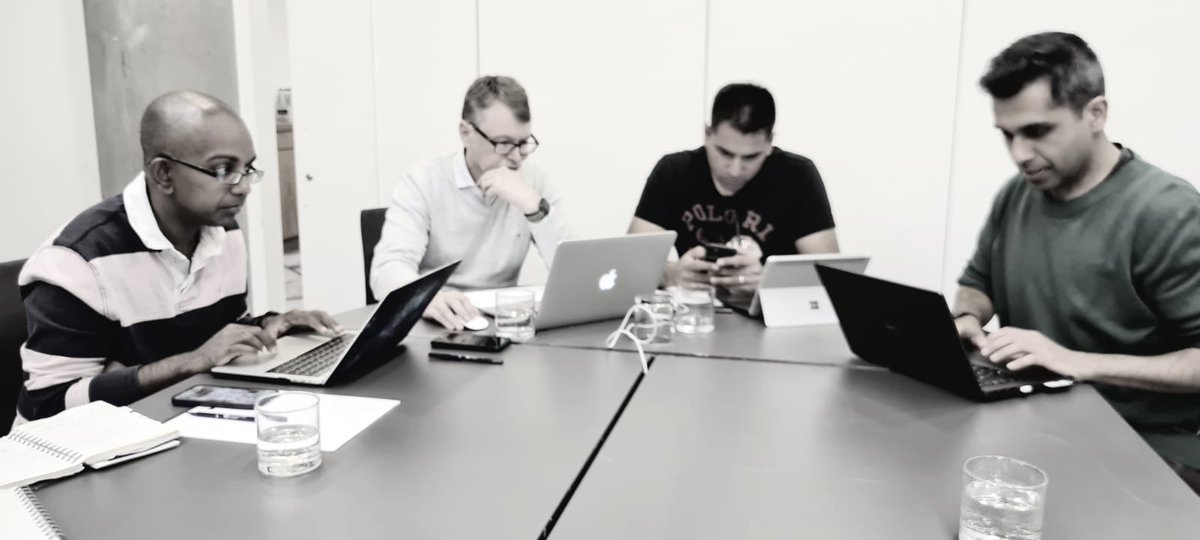
#Endocrinology #Endotwitter @RpratleyMD @ethanjweiss @parthaskar @SaifiTaban @AlbalawiZaina @drkevinfernando @drricardocorrea @CMichaelGibson @cpcannon @Sonia_ButaliaMD @mmamas1973 @SABOURETCardio FOLLOW us here for accredited programs at the speed of Twitter!
1) Welcome to a tweetorial on #insulinhesitancy in contemporary #T2D management. This serialized program is accredited for 0.5h by @academiccme: #physicians, #nurses, #pharmacists! I am @AliceYYCheng . . . 

. . . and this educational activity is intended for healthcare providers and is supported by grants from AstraZeneca, Bayer, Chiesi, and NovoNordisk.
2) Let's start with a case. Meet Masika: 66 year old non-frail woman with #T2D x 15 yrs , MI 2 yrs ago, hypertension, no heart failure, otherwise well. On metformin, #GLP1-RA, #SGLT2i, sulfonylurea. BMI 30 kg/m2, A1c 7.9%, eGFR 66, normal ACR, LDL at target.
3) What is the target A1c that you would discuss with Masika?
a) ≤6.5% (48 mmol/mol)
b) ≤7.0% (53 mmol/mol)
c) 7.1-8.0% (54-64 mmol/mol)
d) ≥8.1% (65 mmol/mol)
a) ≤6.5% (48 mmol/mol)
b) ≤7.0% (53 mmol/mol)
c) 7.1-8.0% (54-64 mmol/mol)
d) ≥8.1% (65 mmol/mol)
4) Consistent with guidelines from around the world, it would be appropriate to target A1c ≤7% (choice b), given that she is non-frail. @DiabetesCanada 

5) … and the reduction in microvascular and macrovascular complications that she can derive from the lower A1c 

6) What is the next appropriate antihyperglycemic therapy to offer her to lower the glucose levels?
a)Basal insulin
b)Premixed insulin
c)Bolus insulin
d)Fixed ratio combination of GLP-1RA + basal insulin
a)Basal insulin
b)Premixed insulin
c)Bolus insulin
d)Fixed ratio combination of GLP-1RA + basal insulin
7) Mark your answer and return tomorrow for more on insulin initiation in T2D! Come back, #FOAMed @PharmacyUpdates @CardioNerds @Sglt2inhibitorL @mvaduganathan @DaveDixonPharmD @kamleshkhunti @hvanspall @mirvatalasnag @djc795 @EiranGorodeski @AndrewJSauer @JohnRMontford
8) Welcome back to our tweetorial on #insulinhesitancy in contemporary #T2D management. The best learning is incremental--and so are serialized #tweetorials! I am @AliceYYCheng. Hello @MedTweetorials #NephTwitter
9) After #GLP-1RA, add basal insulin or transition to fixed ratio combo of GLP-1RA + basal insulin. Consistent with consensus algorithm from @AmDiabetesAssn @EASDnews. 4T study (DOI: 10.1056/NEJMoa075392) . . .
10) . . . showed that basal start had less hypoglycemia and weight gain compared to other insulin regimens 

11) Despite advances in insulin, initiation still is often delayed by many yrs. Why?
a) System-related factors (low access, lack of time)
b) Provider factors (lack of time/experience, inertia)
c) Patient factors (fear of insulin, stigma, fear of wgt gain)
d) All of the above
a) System-related factors (low access, lack of time)
b) Provider factors (lack of time/experience, inertia)
c) Patient factors (fear of insulin, stigma, fear of wgt gain)
d) All of the above
13) Delaying advancement of therapy by 1 yr is associated with the loss of ~13,390 life-yrs and increased cost of USD 7.3 billion (1-yr time horizon, see DOI: 10.1007/s12325-019-01199-8). What can we do to address this inertia?
14) Educate ourselves – as you are doing now. Know Who, What and How of insulin use in type 2 diabetes. Here’s the “Who”. 

15) Here’s the “what”. All available insulins can be classified as Bolus (mealtime), Basal or Premixed. Here is a VERY handy insulin prescription tool from @DiabetesCanada . . .
16) . . . that has made one of the hard parts (prescription) easier. Page 2 has the insulin start & titration “cheat sheet” diabetes.ca/DiabetesCanada…
17) For the “How”, we need to self-reflect. The negative perception of insulin often comes from us. Insulin = “replacement” therapy. It is not punishment or threat. It is not the end of the road.
18) Ask and listen to patient’s concerns. Show the insulin delivery systems. Consider a “dry injection” in office. This will go far to allay fears.
19) Do not get hung up on the starting dose of insulin. It will be wrong! It is ALL ABOUT THE TITRATION. If you are not going to titrate, do not bother starting. Usual basal starting dose is 10 units or 0.2 units/kg. #Titration is the key!
20) Who should be the primary person(s) to titrate the insulin?
21) Mark your answer and return tomorrow for a wrap-up and a link to your FREE CE/#CME ! Poke @DavidLBrownMD @DanielJDrucker @DrRamiMFikri @parthaskar @sotonDSN @DiabetesNNF @DianaSherifali @AlannaWeisman @doreen_rabi @SLubchansky @profmjdavies @ilanajhalperin @GoDiabetesMD
22) Welcome back! Let's wrap this up. THANK YOU for following us for Twitter-delivered CE/#CME. Credits available also in Canada, GB, and EU--all FREE. I am @AliceYYCheng and I left you with a question yesterday!
23) Self-titration by person w/#diabetes is as effective (or more) than HCP-led. If glucose testing is available, teach self-titration of basal insulin using simple algorithm. In Canada, we increase by 1 unit daily until fasting glucose target reached guidelines.diabetes.ca/docs/cpg/Appen… 

24) Pro tip: when teaching self-titration, give context – starting at low dose, will likely need 50-60 units to reach target. This gives context so person more likely to keep titrating.
25) Successful titration requires ongoing support from interprofessional providers - always involve #diabetes education team (nurse, #dietitian, pharmacist etc)
26) Inadequate titration continues to be a barrier even when people are started on insulin as evidenced by the markedly reduced proportion of people w/#T2D achieving A1c <7% on insulin. More work needs to be done! 

27) Final thoughts: Words matter (frame insulin properly from diagnosis). Basal insulin is preferred start in #T2D. The starting dose will always be wrong. Titration is the key. Empower the person living w/#diabetes to self-titrate.
28) That's it! You made it! Free CE/#CME! #Physicians, #nurses, #pharmacists: go to cardiometabolic-ce.com/insulin2 and claim your credit! I am @AliceYYCheng. Follow us for more tweetorials! #Medtwitter #MedEd @MedTweetorials @CardioNerds
• • •
Missing some Tweet in this thread? You can try to
force a refresh











